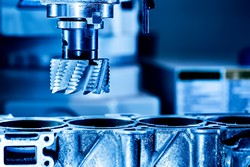Product life-cycle management solution to boost European machine tool manufacturing competitiveness
Current computer-aided design (CAD), computer-aided manufacturing (CAM) and computer numerical control (CNC) production methods only offer a unidirectional manufacturing information flow from CAD to CNC. The transition along the CAD-CAM-CNC chain leads to manufacturing information loss and fragmentation. This means changes made downstream cannot be tracked back upstream. Moreover, there is a lack of interoperability between various software and hardware systems. Thanks to EU funding, the STEPMAN(opens in new window) (Development of a STEP and STEP-NC standard based integrated product lifecycle management solution to increase the competitiveness of European machine tool manufacturing SMEs) project developed a manufacturing platform that allows smooth data exchange between CAD/CAM systems and CNC machines. Project partners performed several surveys to develop a system that meets the needs of end users. The market information gathered was used to fine-tune the system throughout the project. Following the initial specifications, they created the basic software structure in line with the necessary database structures. The STEPMAN team then turned its attention to system implementation, and centralised and company-level databases. Core function development focused on CAD model manipulation, interpreters and high-level manufacturing functions. It finalised the core functions for manufacturing, and integrated them into the system. Researchers created the underlying architecture, thus enabling all the modules to run together outside the development environment. They installed, tested and successfully validated the prototype system at various industrial facilities. Thanks to STEPMAN, European machine tool manufacturing SMEs now have the technology platform to completely overhaul the traditional CAD-CAM-CNC chain. Future commercialisation of the prototype after further research could mean it will be possible to connect manufacturing resources to a platform that allows manufacturing knowledge to be captured throughout the production process and sent upstream or downstream as appropriate. Being extensible, it enables bidirectional information transfer across all computer-aided systems involved in manufacturing.







